Top Tier CPU Air Coolers Q3 2015: 9-Way Roundup Review
by E. Fylladitakis on July 6, 2015 8:00 AM ESTThe Raijintek Tisis
Raijintek is yet another new European company, founded in 2013. For a company this new, Raijintek is retailing a fair number of products, which are thirteen coolers, four cases and several fans, with the company now expanding to peripherals and PSUs. The Tisis is Raijintek's most recent and advanced CPU cooler, which was originally baptized "Nemesis" but it was renamed due to a naming collision with another company's similar product.
The Tisis is supplied in a reasonably sized cardboard box with strong black/red artwork on it, focused around a picture of the cooler itself. Inside the box everything is well packed and the cooler is protected inside a polyethylene foam shell. Despite the obviously very rough time our sample had during its shipping to us, everything inside the box was unscathed.
Raijintek kept the bundle to the minimum of things required. Aside from the hardware and thermal grease necessary for the mounting of the cooler and a long L-type Philips PH2 screwdriver, nothing else is provided. It is however noteworthy to mention that there are no wire clips for the fans as this is the only cooler in this roundup review that is using rubber mounts instead.
There are two 140 mm fans provided inside the package, both with a red frame and white blades. There is nothing prominent about the fans, with the exception of the partially jagged blades. The OEM is recognizable and is PelHong Technology, a Chinese manufacturer. Both fans are identical, have engines with sleeve bearings and a relatively low maximum speed of just 1.000 RPM.
The Raijintek Tisis is a very large asymmetric dual tower cooler, with the towers completely different from each other. The fins of the front tower are larger and both of their fan-facing sides are jagged, while the fins of the rear tower are smaller and their sides are completely straight. Furthermore, the fins of the front tower have folded sides, effectively forming a wind tunnel that prevents the air from exiting from the sides. Openings for the rubber mounts of the cooling fans can be clearly seen. This method is a little more convenient than wire clips but it also prevents the adjustment of the fan's height, removing the possibility to raise the front fan a little bit to increase the RAM modules clearance.
The copper base and heatpipes of the Tisis are nickel-plated and polished, especially the contact surface that has been machined down to a perfect mirror finish. Five thick 8 mm heatpipes go through the relatively small base of the Tisis and expand to both fin arrays. For the installation of the cooler, the middle fan needs to be removed, as there is no other way for the screwdriver to reach the base of the cooler.


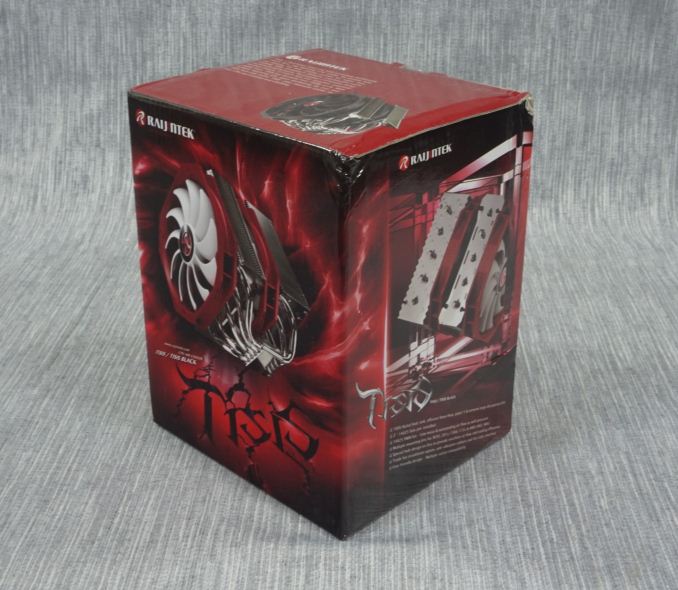
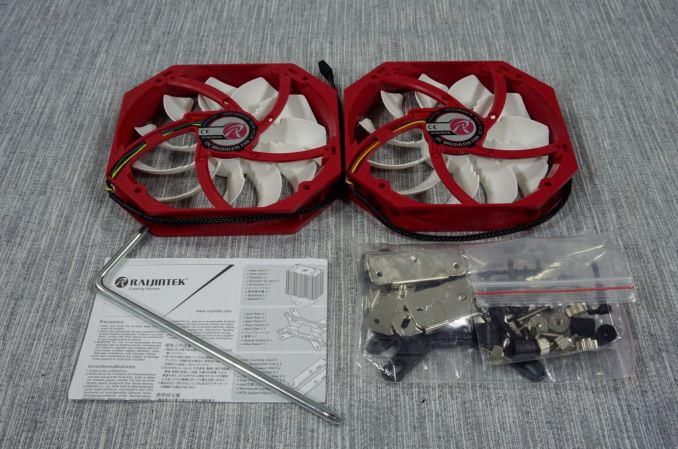
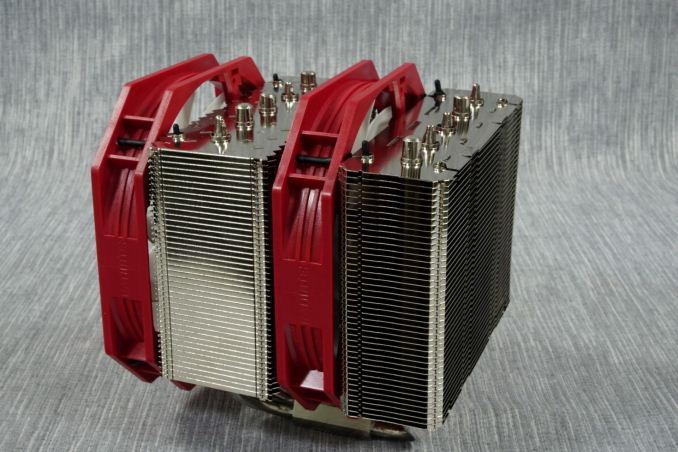
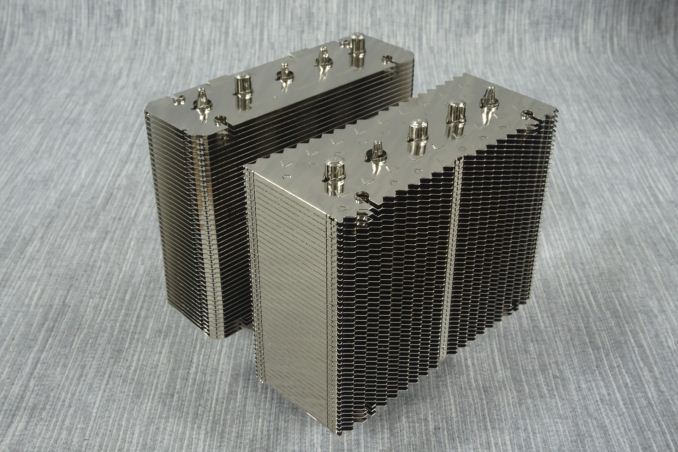
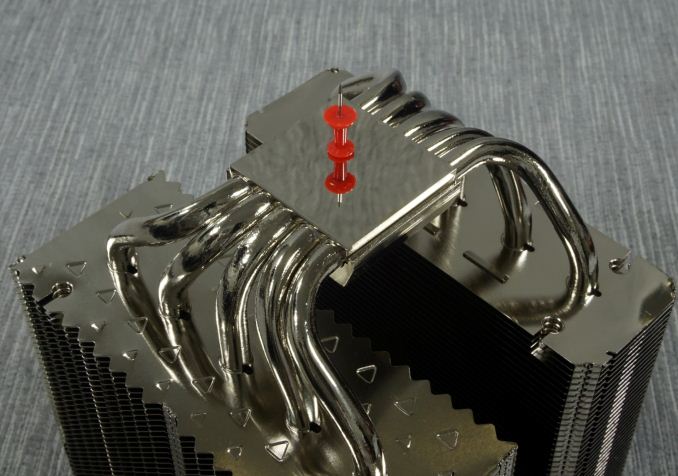








135 Comments
View All Comments
MartenKL - Monday, July 6, 2015 - link
I would of course like to see the testbed updated to have fan/s controlled by thermals, ie something like ASUS Fan Expert. Set for a target temperature and loads in the more realistic range of 15-150 watts. And of course when reducing voltage it should be via PWM and not simply reducing static voltage. The results should then be presented in temperature variance and noise levels/profile.MrSpadge - Monday, July 6, 2015 - link
Good suggestions. I hate those charts with "full fan voltage" and "fan voltage reduced to ..". What I really care about is "how silent can the cooler be for a given temperature / cooling performance?" And "which one cools better at similar noise level".It doesn't help much to see a strong fan with inbearable noise in those charts. Even if someone is interested in such solutions - wouldn't his question rather be "which heatsink performs best with this high-speed fan"? Which would again be something he couldn't answer from this data.
I know making noise based comparisons is difficult. But the raw sound pressure could be accompanied by some subjective remarks regarding the noise spectrum.
Cookiespy - Monday, July 6, 2015 - link
It would be interesting to see how the stock coolers compare to this high performance cooler. I wouldn't pay $80-100 just to see 5degrees improvement.Eidigean - Monday, July 6, 2015 - link
Chips big enough to need these coolers, such as Socket 2011, do not come with stock coolers.meacupla - Monday, July 6, 2015 - link
The stock heatsink cools great and is pretty silent with stock settings in a case with decent airflow, end of story.These kinds of $80 heatsinks are what you want when you overclock, but with the same or lower noise levels.
If you don't overclock, then a $20~25 heatsink can do a 5~20C improvement and keep the computer quieter at the same time too.
Eidigean - Monday, July 6, 2015 - link
What are you, a shill for Intel? The Intel stock heatsinks are the absolute worst. Check out the graphs from this Anandtech article:http://www.anandtech.com/show/6830/cpu-air-cooler-...
Dead last in performance AND noise. Stock heatsink was greater than 30 degrees C hotter, and 20 decibels louder.
meacupla - Monday, July 6, 2015 - link
It says right there in the system specs used to test those coolers..."Intel Core i7-2700K overclocked to 4.4GHz @ 1.4V"
I'm surprised the stock intel heatsink was able to complete the tests.
meacupla - Monday, July 6, 2015 - link
no wait, look, it says the stock heatsink and a low profile heatsink failed on an overclocked i7.Like I said, stock intel heatsink, especially the one with a copper core, works great at stock speeds.
Azurael - Friday, July 17, 2015 - link
I don't know if the stock HSFs have changed since Sandy Bridge, but my 2500k would hit 98+ degrees and throttle under AVX loads with the pathetic little stock thing whilst sounding like a small tornado had developed inside my case (how is it that a 95w CPU comes with an HSF half the size of the ones they used to ship with 65w C2Ds?!)Whichever cheap tower cooler I replaced it with does the job just fine, though. It's been running like a champ at 4.5GHz for near enough 4 years now. (I think it's a Xigmatek SD1283 - I haven't even taken the side off my machine for over a year, those heady days of tinkering and yearly upgrades long since passed.)
bug77 - Monday, July 6, 2015 - link
What, no mention of the weight of each cooler? I think that's a rather important aspect.